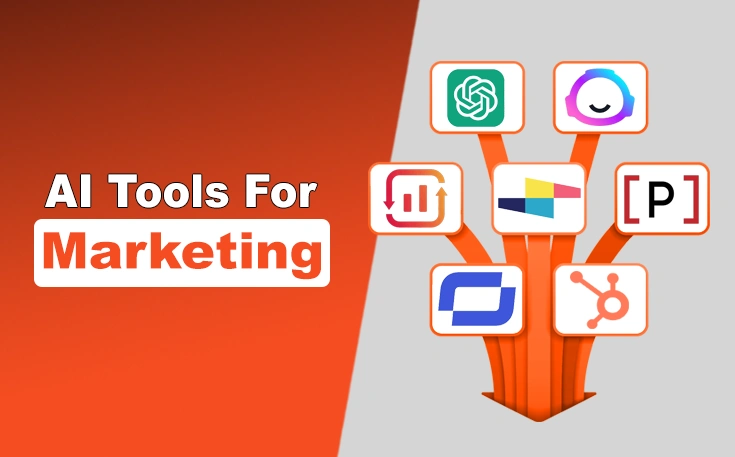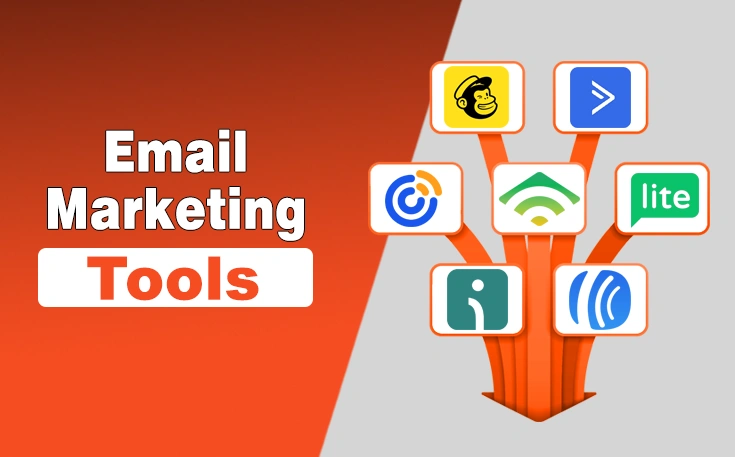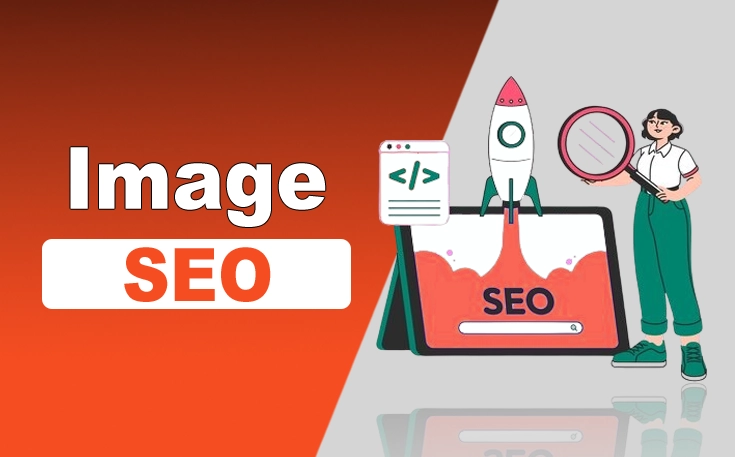So, you have heard the term “digital marketing” tossed around everywhere lately and now you are wondering what it actually means. Maybe you are curious about what is digital marketing because you are looking for a new career path, or maybe you just want to understand how businesses promote themselves online. Either way, you’re in the right place.
In this guide, I’m going to break down digital marketing in a way that’s simple, practical, and understandable for complete beginners. Whether you want to pursue a career in digital marketing or learn how to start digital marketing from home, I’ve got you covered.
What is Digital Marketing?
Digital marketing is the process of promoting products, services, or brands using digital channels. These include websites, search engines, social media platforms, email, and mobile apps. Unlike traditional marketing, which relies on physical media like newspapers, billboards, and TV ads, digital marketing leverages the internet to reach targeted audiences more efficiently and affordably.
This form of marketing includes a wide range of strategies such as content marketing, SEO (Search Engine Optimization), PPC (Pay-Per-Click) advertising, social media marketing, email campaigns, affiliate marketing, and more. It’s a dynamic field that combines creativity, analytics, and technical skills.
Why is Digital Marketing a Great Career Choice Today?
Before getting into how to start digital marketing from home, let’s understand why it’s a booming field.
1. High Demand Across Industries
Every business wants to be online, from local shops to global brands. This demand means there’s always a need for skilled digital marketers.
2. Diverse Career Options
You don’t have to be a designer or coder to succeed here. Digital marketing offers roles in content creation, advertising, social media, analytics, SEO, and more.
3. Flexibility and Remote Opportunities
One of the biggest perks I’ve enjoyed is the flexibility. You can freelance, start your own blog, manage campaigns remotely, or even build an agency from home.
4. Measurable Growth and Performance
Digital marketing allows you to track your success in real-time. You can see which ad performs better, which email gets more clicks, and which keyword ranks highest.
Traditional Marketing vs Digital Marketing
Before the internet, businesses relied on newspapers, billboards, and TV ads. That was traditional marketing. Today, with digital marketing, we’ve moved to a much more interactive and measurable approach.
Let’s compare both to see the difference.
- Audience Reach and Engagement: Traditional marketing targets local audiences through radio, TV, or newspapers. Digital marketing can reach a global audience and offers direct interaction through comments, DMs, or email.
- Cost Effectiveness: Running a newspaper ad is expensive and often less measurable. Digital marketing allows even small budgets to generate big results with better tracking.
- Measurability: Digital campaigns can be tracked in real-time using tools like Google Analytics. You’ll know exactly what’s working and what’s not.
- Flexibility and Speed: Want to update a Google ad? Done in minutes. Traditional marketing changes require reprints or rescheduling which costs time and money.
- Targeting Capabilities: Digital platforms allow laser-focused targeting — by age, location, behavior, and interests. Traditional marketing is more generalized.
How to Start Digital Marketing from Home?
If you’re wondering how to start digital marketing from home, you’re not alone. That’s exactly where I started too. The good news? You don’t need a marketing degree or a fancy office setup. All you need is a laptop, internet access, and a plan.
Let me walk you through a clear, practical roadmap that works even if you’re a complete beginner. I’ll break it down into steps that will help you learn the fundamentals, practice your skills, and build a personal brand or freelance career from scratch.
1. Understand What Digital Marketing Really Means
Before jumping in, it’s crucial to get a good grasp of what digital marketing involves. It’s not just social media posts or flashy ads. It is about using digital channels to create awareness, generate leads, and drive conversions for brands, businesses, or personal projects.
Core channels include:
- Search Engine Optimization (SEO)
- Content Marketing
- Social Media Marketing
- Email Marketing
- Paid Advertising (Google Ads, Facebook Ads, etc.)
- Affiliate Marketing
- Analytics and Data-driven Marketing
You don’t need to master all of these at once. Pick one or two, especially those that interest you most, and begin learning the ropes.

2. Learn the Basics (And Don’t Skip This Part)
Digital marketing is a broad field. Here are the core areas you should explore first:
- Search Engine Optimization (SEO): Learn how to make websites rank higher on Google through keyword research, content optimization, and link-building techniques.
- Social Media Marketing: Understand how to create and schedule posts, run paid ads, and grow a following on platforms like Facebook, Instagram, LinkedIn, and X (formerly Twitter).
- Content Marketing: Master the art of writing blogs, creating videos, and designing infographics that provide value and attract an audience.
- Email Marketing: Discover how to build email lists, craft engaging newsletters, and automate campaigns that convert subscribers into customers.
- Pay Per Click (PPC) Advertising: Understand how to run paid ads on platforms like Google Ads and Facebook Ads, and how to optimize them for maximum ROI.
3. Choose Your Niche or Focus Area
Now, here’s a mistake I made early on: trying to learn everything at once. Don’t do that. Digital marketing is broad. Instead, ask yourself:
- Do I love writing? Start with content marketing or SEO.
- Am I good at visuals or communication? Social media marketing might be your thing.
- Do I enjoy numbers and data? Google Ads or analytics could be your focus.
Choosing a niche will help you stay focused and build deep expertise rather than shallow knowledge across ten areas.
4. Learn the Fundamentals from Free or Paid Courses
Let me tell you a secret: some of the best marketers I know never went to college for marketing. They learned from home, just like you’re planning to.
Here are some great places to start:
a) Free resources
- Google Digital Garage (Fundamentals of Digital Marketing)
- HubSpot Academy (Inbound Marketing, Email Marketing)
- Meta Blueprint (Facebook and Instagram Ads)
- Moz Beginner’s Guide to SEO
b) Paid but worth it:
- Udemy (Great for affordable structured learning)
- Coursera (University-grade courses like from the University of Illinois)
- LinkedIn Learning (Also helps build a credible profile)
Pro Tip: Start with the free ones and invest in paid ones once you find your path.
5. Set Up Your Digital Presence (Practice What You Learn)
Theory is useless without practice. The best way to build skill and confidence is by doing. Here’s how to start practicing from home:
- Create a personal blog or website: Use WordPress or Wix. Try writing optimized articles, play with SEO plugins, and build your understanding of web traffic.
- Start a niche Instagram or LinkedIn page: If you’re interested in social media marketing, this is your lab. Test content types, analyze engagement, and learn what works.
- Try email marketing tools: Use platforms like Mailchimp to build test campaigns. You can even create a newsletter around a hobby.
- Run a tiny ad campaign: Spend $5-10 on Google Ads or Facebook Ads to see how the backend works. This small budget will teach you more than any book.
6. Build a Portfolio Without Clients
No one will hire you just because you say you’re a digital marketer. You need proof — and that’s where a portfolio comes in.
Here is how you can build one from home without real clients:
- Offer free work to small businesses or NGOs: In exchange for testimonials.
- Create case studies: For example, write a blog post on how you grew your Instagram page from 0 to 500 followers in 30 days.
- Document your learning journey: Create a personal project (like a fitness blog or cooking newsletter) and show your process and results.
Even if you have never had a paying client, a strong personal portfolio speaks volumes.
7. Use Freelancing Platforms to Start Earning
Once you’ve built some skills and a portfolio, it’s time to find your first paid gig. Here’s where to look:
- Upwork: Create a detailed profile and start bidding on beginner-friendly jobs.
- Fiverr: Offer digital marketing gigs like keyword research, writing blog posts, or managing a small Instagram page.
- LinkedIn: Use content and personal branding to attract inbound opportunities.
- Facebook Groups: Join marketing or entrepreneur groups. Many people post job opportunities or are looking for digital marketers.
Start with small tasks, deliver top-notch work, and gradually raise your rates.
8. Stay Updated and Keep Practicing
Digital marketing changes fast. Google updates its algorithms, new social media platforms rise, and trends evolve. I recommend:
- Following thought leaders like Neil Patel, Rand Fishkin, and Ann Handley
- Subscribing to newsletters like Search Engine Journal or Marketing Brew
- Joining free Slack communities or Discord servers of marketers
Pro Tip: Treat learning as a continuous process. You will get better, faster, and more strategic over time.
9. Consider Certifications to Boost Credibility
Certifications won’t replace experience, but they can definitely help your resume or freelance profile. I recommend earning:
- Google Digital Marketing Certification
- HubSpot Content Marketing Certificate
- Meta Certified Digital Marketing Associate
- Google Ads or Analytics Certifications
These can make you stand out when applying for jobs or pitching clients — especially as a beginner.
10. Set Up a Productive Work-From-Home Routine
One challenge I faced early on was balancing learning and working from home. It’s easy to get distracted. Here’s what helped me:
- Create a dedicated workspace: Even if it’s just a small desk.
- Use productivity tools: Like Trello for task management or Pomodoro timers for focus.
- Set clear goals: For example, “Learn SEO basics by Week 1,” or “Land my first freelance gig by Month 2.”
Your growth will depend on consistency more than anything.
The Future of Digital Marketing
Digital marketing is evolving rapidly, and if you want to stay ahead, it’s important to keep an eye on trends shaping the industry. Here’s what I see coming up:
- AI and Machine Learning: Smart algorithms will personalize user experiences like never before. Think chatbots, predictive content, and automated ad targeting.
- Voice Search Optimization: With Alexa and Google Assistant becoming household names, marketers will need to tweak their SEO strategies to suit voice search.
- Video and Short-Form Content: Platforms like YouTube Shorts and TikTok are proof that attention spans are shrinking. Future strategies will revolve around creating punchy, value-packed videos.
- Data Privacy and First-Party Data: With cookies dying out, businesses will depend more on first-party data and transparent consent collection.
- Metaverse and Virtual Experiences: Digital marketing could become immersive. Imagine virtual showrooms, product launches in the metaverse, or AR-based ad experiences.
So yes, the future of digital marketing isn’t just bright—it’s practically on fire.
Digital Marketing Interview Questions You Should Prepare For
If you’re planning to land a job in digital marketing or even freelance gigs, interviews can be a big deal. Here are some real-world digital marketing interview questions I’ve come across or heard from folks in the industry:
- What is the difference between SEO and SEM?
- Can you walk me through how you’d create a digital marketing strategy for a new product?
- What KPIs would you track for a social media campaign?
- How do you stay up to date with digital marketing trends?
- What tools do you use for keyword research and competitor analysis?
- Can you explain the buyer’s journey and how it impacts content marketing?
- What’s your experience with Google Ads or Facebook Ads?
Pro tip: Don’t just memorize answers. Instead, try to speak from your hands-on experience, even if it’s from your own blog, side hustle, or an online course project.
Digital Marketing Side Hustle Ideas to Explore
One of the coolest things about this field? You don’t need a fancy office or a full-time job to start earning. You can start small and build a serious digital marketing side hustle right from your home. Here are a few ideas I love:
- Freelance Blogging and SEO Writing: Businesses are always looking for people who can write content that ranks.
- Social Media Management for Local Businesses: Many small businesses need help building their Instagram or Facebook presence.
- Affiliate Marketing: Promote products and earn commissions. With a good niche site or YouTube channel, this can scale well.
- Email Marketing Services: If you’re good at copywriting and segmentation, many brands will pay for help with their newsletters.
- Creating Online Courses: If you learn a skill like Google Ads or SEO, you can turn that into a course and sell it.
These side hustles not only bring in income but also build your portfolio. And who knows, one of them might just become your full-time thing.
How to Write a Digital Marketing Cover Letter That Gets Noticed?
Okay, let’s talk about the cover letter. It’s your chance to stand out, especially in a field where creativity matters. Here’s what I usually include when writing a digital marketing cover letter:
- Start with a Hook: Open with a sentence that shows passion or results. Something like, “After helping a local brand grow their website traffic by 80%, I’m excited to bring my skills to your team.”
- Customize it to the Role: Mention specific skills from the job posting. Talk about experience with Google Analytics, SEO tools, content writing—whatever applies.
- Use Metrics and Results: Employers love numbers. Did you grow engagement by 25%? Say it.
- Show Adaptability: Mention how you stay updated, your ability to learn tools quickly, or how you adapt to platform changes.
- End Strong: A confident line like “I’d love to discuss how I can bring value to your digital campaigns” adds a nice personal touch.
Pro Tip: Try to keep it to one page and always pair it with a well-optimized resume.
Final Thoughts
These are the details about what is Digital marketing. In short, it is one of the most accessible, flexible, and fast-growing fields today. Whether you’re aiming to freelance, work with an agency, or grow your own brand, starting from home is not just possible – it’s smart.
With the right learning resources, a focused plan, and the willingness to stay updated, you can absolutely thrive in this space. So pick your niche, build your skills, and take the first step today. The digital world is waiting for you to make your mark.
Need custom app with amazing features?
Get a Quote




